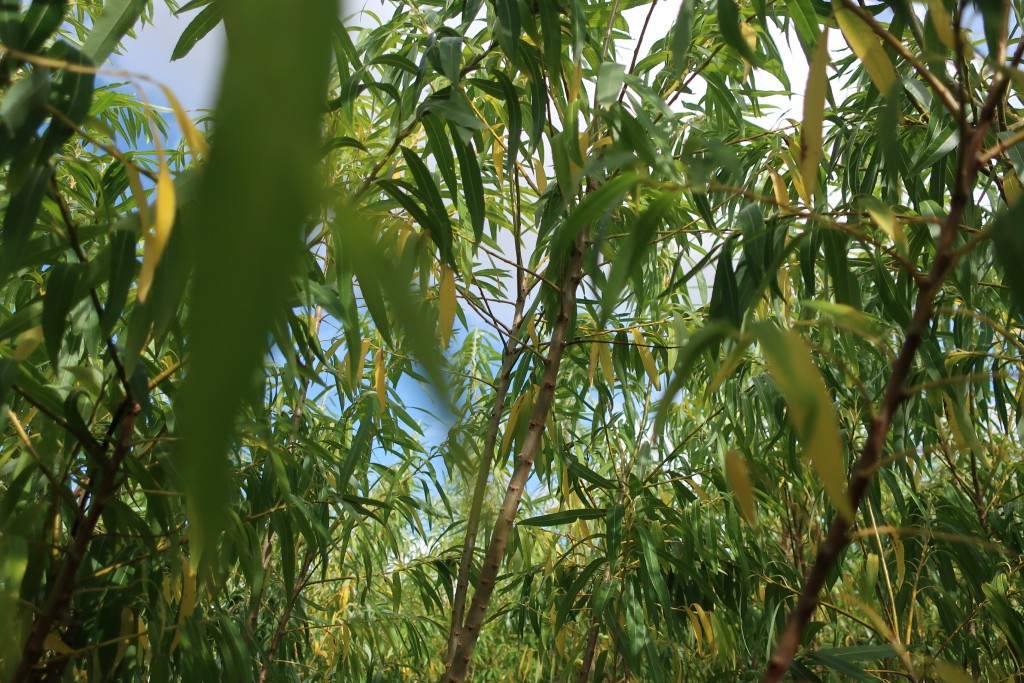
Rothamsted scientists, working with cancer biologists at the University of Kent have discovered a chemical in willow which has been found to kill various cancer cells, including those resistant to other drugs.
Of particular excitement is its activity against neuroblastoma, a hard to treat and common childhood cancer where the overall survival rate is below 50%.
In laboratory tests, the chemical, miyabeacin, was also found to be effective against several breast, throat and ovarian cancer cell lines.
Rothamsted’s Professor Mike Beale, a co-leader of the study said whilst the pharmaceutical activity of salicin, the active ingredient in aspirin, is well known, the pharmacological properties of miyabeacin are potentially even greater.
“With resistance to treatment being a significant issue in cancers such as neuroblastoma, new drugs with novel modes of action are required and miyabeacin perhaps offers a new opportunity in this respect.
“Structurally, it contains two salicin groups that give it a potential ‘double dose’ of anti-inflammatory and anti-blood clotting ability that we associate with aspirin.
“However, our results reporting the activity of miyabeacin against a number of cancer cell lines, including cell lines with acquired drug resistance, adds further evidence for the multi-faceted pharmacology of willow.”
After brain cancers, neuroblastoma is the most frequent solid tumour seen in the under-fives.
The team tested miyabeacin against a range of cancer cell lines. Initial cell viability assays were carried out on a neuroblastoma cell line established from a stage 4 neuroblastoma patient,and a drug resistant sub-line.
Professor Beale says the next steps are to scale up production of miyabeacin from farmed willow and provide more material for further medical testing.
The use of willow bark in medicine was recorded by ancient Greek, Assyrian and Egyptian civilisations, but the first scientifically reported investigation of willow as a remedy for fever was in 1763.
In 1897 the Bayer Company produced the synthetic analogue, aspirin (acetylsalicylate), one of the earliest and most successful nature-inspired drugs.
Rothamsted Research is home to the UK’s National Willow Collection, and in conjunction with the Institute’s established expertise in analytical chemistry, Dr Jane Ward , a co-leader of the study, puts the cancer breakthrough down to having 1500 willow species and hybrids available to screen with state of the art techniques.
“Possibly because of the success of aspirin, medicinal assessment of other salicinoids in willow has been mostly neglected by modern science, and the National Willow Collection has proven to be a gold-mine of exciting new chemistry, that perhaps underlies its position in ancient therapies,” she said.
Publication
Miyabeacin: A new cyclodimer presents a potential role for willow in cancer therapy
Contacts
Prof. Michael Beale
Phone: +44 (0) 1582 938 125
E-Mail: Mike.Beale@rothamsted.ac.uk
Dr. Jane Ward
Phone: +44 (0) 1582 938 845
E-Mail: jane.ward@rothamsted.ac.uk
Source
Rothamsted Research, press release, 2020-04-15.
Supplier
Rothamsted Research
University of Kent
Share
Renewable Carbon News – Daily Newsletter
Subscribe to our daily email newsletter – the world's leading newsletter on renewable materials and chemicals










